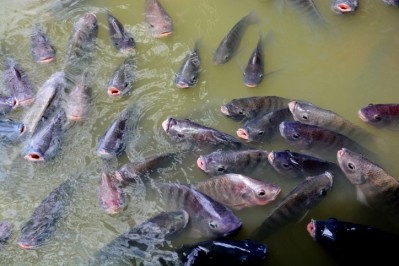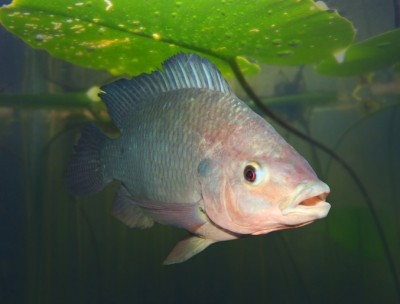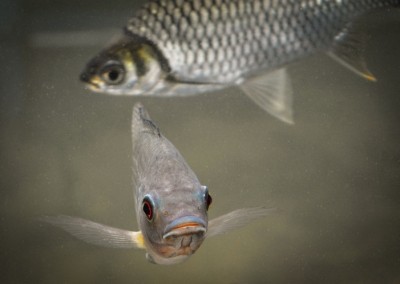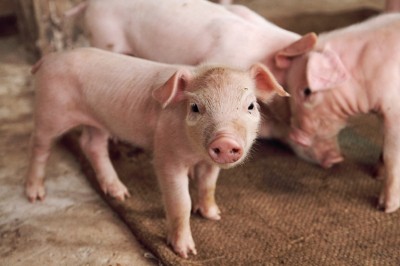Adjusting carb to lipid ratios in tilapia feeds may boost economic returns, fish performance
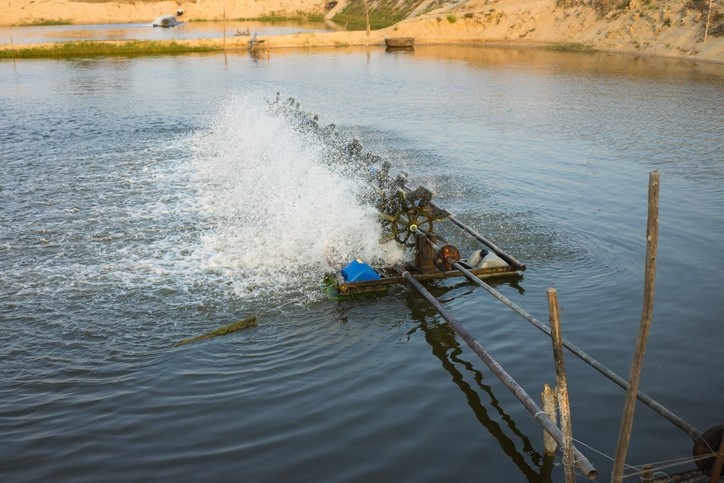
A team of researchers from Brazil explored the use of differing levels of carbohydrates and lipids in the diets of net cage-raised Nile tilapia. The group members published their work in the journal Aquaculture.
“The present study evaluated practical diets for Nile tilapia with different CHO:LIP [carbohydrate:lipid] ratios in order to determine those that best meet the energy demands of fish farmed in net cages,” the researchers said. “Diet efficiency was based on productive and economic performance, nutrient use efficiency and physiological parameters of the fish.”
Fish on the 6.14 diet or 43% carbohydrate: 7% lipid ratio diet had the best performance results, the researchers found. Fish receiving the diet displayed the best percent weight gain (WG), daily specific growth rate (SGR), feed intake and highest gross energy retention efficiency.
“Considering the partial economic analysis, the diets that provided the highest productive performance brought better results,” they said. “Considering the experimental conditions in a pre-winter season, the diet containing … 43% CHO and 7% LIP best met the energy demands of Nile tilapia, resulting in the best productive performance, nutrient use efficiency, physiological index values and the most profitable with a partial net income of US$ 72.19.”
Why explore carbohydrate-to-lipid ratio?
As aquaculture production expands, changes have been made to the ways fish are farmed, said the researchers. Improving technologies have allowed for intensification of production.
Tilapia is one of the most commonly produced species globally, and about 4m tons was generated in 2015, they said. “The production of fish in 2016 in Brazil was 507.12 thousand tonnes, and tilapia production was 239.09 thousand tonnes, representing 47.0% of the total fish production in the country,” they said.
The fish grows quickly in intensive farming systems and has a high survival rate, they said. It also can be raised in different systems and different environmental conditions.
Carbohydrates are added to fish diets because they are a less expensive form of energy, but they are not classified as “essential growth” elements for fish, and fish use carbohydrates less efficiently than other species, they said. Lipids, however, have an “essential and dynamic role” for fish production, health, neural and visual development, flesh quality and reproduction.
The amount of dietary carbohydrate fish can use varies among species and is not fully understood, the researchers said. Lipid metabolism also is reported to be “modulated by dietary carbohydrates.”
“It has been shown that tilapia juveniles can utilize 46% cornstarch in foods containing 29% protein and an energy/protein ratio of 37.9 kJ g −1 without growth retardation, although the feed containing 22% starch was ideal (Wang et al., 2005),” they said. “The optimal level of 10% lipid in diet was adequate for growth of hybrid tilapia reared in fresh water according to previous studies (El-Sayed and Garling, 1998; Chou and Shiau, 1996).”
Adding excessive amounts of lipids or carbohydrates can lead fish to accumulate high lipid levels in their livers, which slows growth and decreases survival rate and disease resistance, they said. However, no information was available about the optimal carbohydrate-to-lipid ratio for Nile tilapia raised in net cages.
Feed trial details
In the feeding study, 1,280 tilapia were given one of four diets for a period of 120 days, the researchers said. Production took place from autumn to early winter.
The diets were formulated and pelleted using the same ingredients to have about 250g Kg−1 in digestible protein and about 14.64 Mj Kg−1 digestible energy but different levels of starch and soybean oil to establish the series of carbohydrate to lipid (CHO:LIP) ratios, they said. The ratios included 3.89, 4.87, 6.14 and 7.83 “CHO35/LIP9, CHO39/LIP8, CHO43/LIP7 and CHO47/LIP6, respectively.”
Fish were weighed at the start and end of the trial, and productive performance was determined by survival rate, mean weight gain, protein efficiency ratio (PER), feed conversion ratio (FCR) and specific growth rate, they said. Daily feed intake also was established and fish were sampled at the start and end of the trial to check body composition.
Performance data and body composition were used to determine protein productive value (PPV) and energy retention (ER), the researchers said. An additional sample of fish on each diet was collected for liver and intraperitoneal fat samples for analysis.
An economic performance assessment also was completed based on a partial cost analysis, said the researchers. “Based on feed, labor and fish purchase costs, in addition to income from sales to fish processing plants, the partial net income calculated corresponds to the gross income subtracted from feed, labor and fish purchase costs,” they added.
Results
Overall, fish on the different diets had significant differences, the researchers said. However, the survival rate for all diets was 100%.
Fish getting the CHO43/LIP7 (6.14) diet had the best overall “productive performance,” they said.
Mean percent weight gain was lowest for fish with the CHO:LIP ratio of 3.89, they said. Fish on the highest CHO:LIP ratio had the best feed conversion ratio and the lowest feed intake.
“The hepatosomatic (HSI) and viscerosomatic fat (VSFI) indexes were different for the various treatments, with higher mean values for CHO:LIP ratios of 6.14 and 7.83,” they said. “An increase in HSI was likely caused by glycogen or LIP deposition, given the excess of diet digestible energy. Hepatic glycogen did not differ among the treatments, but the CHO:LIP ratios of 6.14 and 7.83 increased HSI mainly due to the rise in liver fat.”
The diet with the lowest CHO:LIP ratio was the cheapest in terms of partially effective operational cost, the researchers said. However, fish on that diet gained the least weight and produced the lowest net income.
However, fish on the CHO/LIP8 or 4.87 diet showed the best partial net income of $75.27, followed by fish on the CHO43/LIP7 diet, they said.
Source: Aquaculture
Title: Carbohydrate-to-lipid ratio in extruded diets for Nile tilapia farmed in net cages
Author: Juliano Coutinho, Ligia Neira, Lidiane de Sandre, Jesaias da Costa, Maria Martins, Maria Portella, Dalton Carneiro
DOI: doi.org/10.1016/j.aquaculture.2018.08.014
